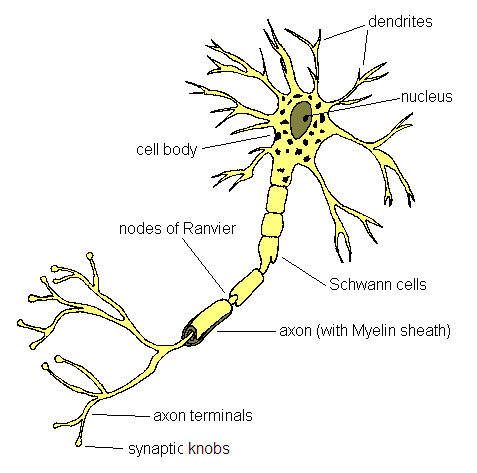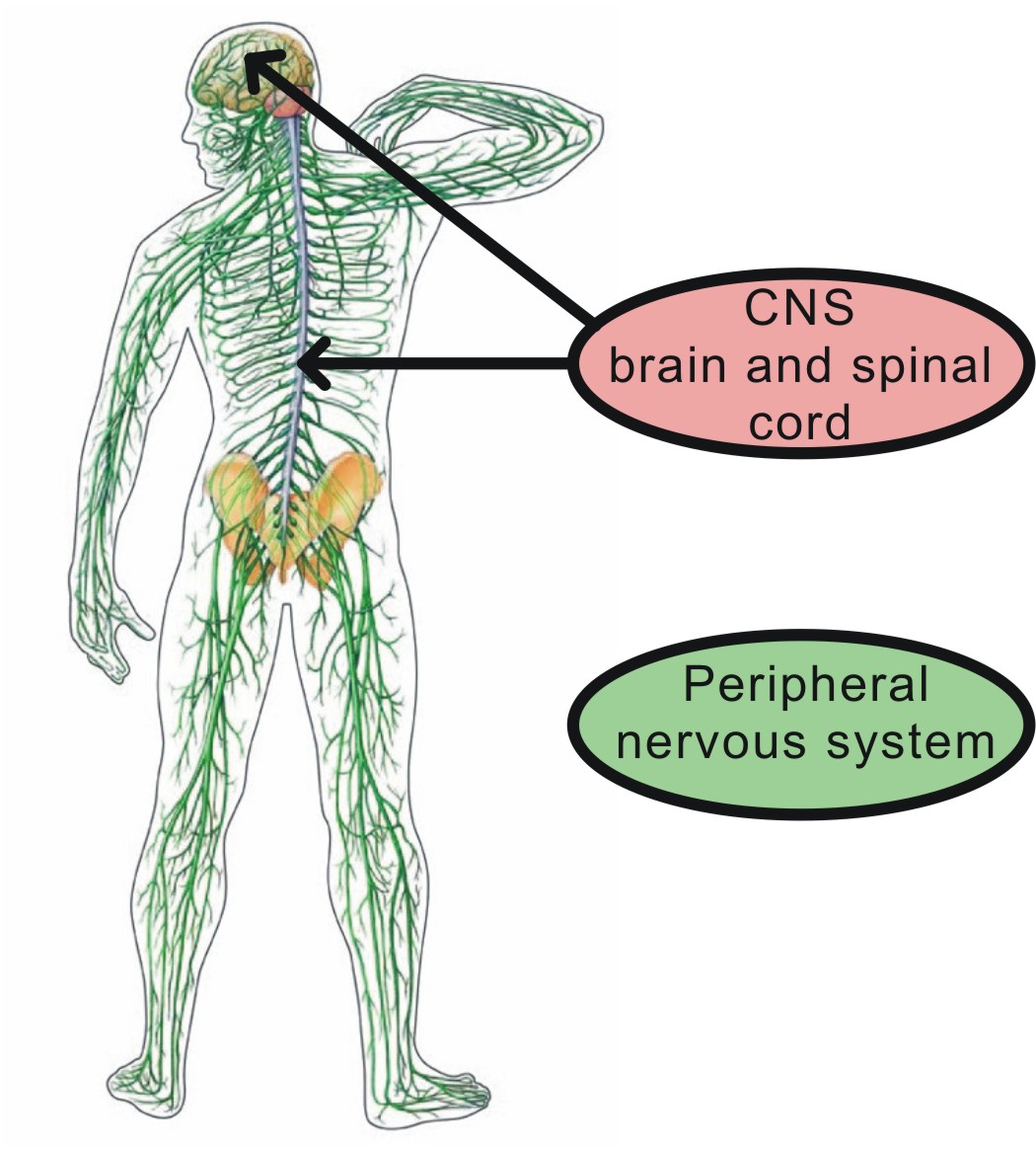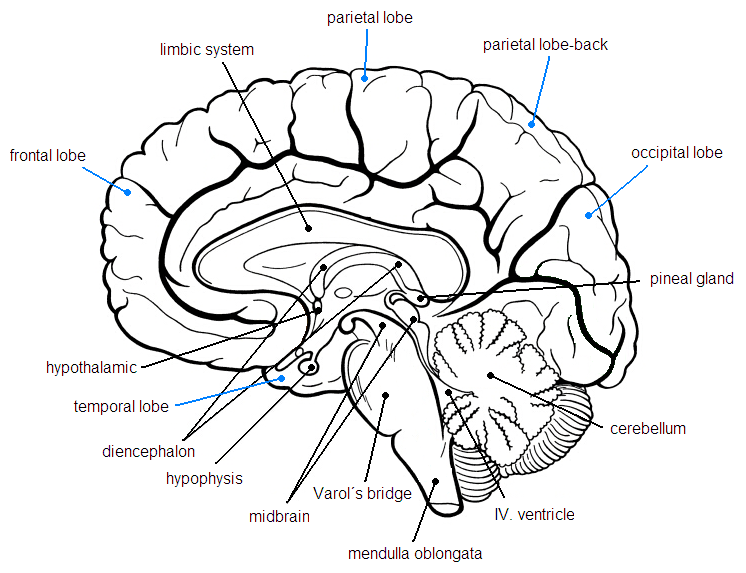
Structure and functions of the nervous system
Muscle contraction is initiated by the nervous system which together with the endocrine system controls the human organism. They are responsible for the steadiness of the inner environment and coordination of all the bodily functions. The nerve cell, a neuron, is the basic unit of the nervous system (Fig. 14). Cells attending to muscles are called motoneurons. A neuron is composed of the body and projections. The shorter ones are called dendrites, the long one is axon. Through the dendrite the neuron is able to obtain information from other neurons. The axon then passes the processed information to other cells (e.g. muscle cells). The information is further spread along the neuron through changes in the voltage in the cell membrane, the so called action potential. The transfer of information between individual nerve cells is then secured by chemical agents. Once the action potential has reached the end of an axon, the mediator is released.
Figure 14 Organization of neuron

Neuromuscular junction is a place where the last motoneuron and the muscle cell meet. The binding of the mediator (acetylcholine) to the receptor brings about another action potential which spreads along the muscle cell membranes.
Central and peripheral nervous system
The nervous system is made up of the central and peripheral nervous systems (Fig. 15).
Figure 15 Organization of the nervous system

The central nervous system (CNS) is composed of the brain and the spinal cord.
The brain is made up of (Fig. 16):
- medulla oblongata
- pons Varolii
- midbrain or mesencephalon
- little brain or cerebellum
- interbrain or diencephalon: thalamus and hypothalamus
- basal ganglia
- limbic system
- cerebral cortex
Different parts of the CNS are interconnected through ascending and descending pathways creating functional wholes.
Figure 16 Structure of the brain

The peripheral nervous system is composed of 12 pairs of head nerves connected to the brain and of 31 pairs of spinal nerves attached to the spinal cord. Sensoric nerves transfer information from body receptors to the CNS. Motoric nerves transport information from the CNS to muscle fibres.
Autonomic nervous system
The autonomic nervous system controls the activities of the inner organs (heart, glands, smooth muscles). It is involuntary. It is made up of sympathetic and parasympathetic systems which both try to keep the functional balance of the human body with the possibility of either of the systems taking prevalence in certain situations. In athletes the sympathetic system becomes dominant during movement activities while the parasympathetic system prevails under resting conditions.
The sympathetic nervous system enhances organ activity (increase in HR, increase in BP, etc.) while the parasympathetic nervous system produces the opposite effect, i.e. reduces organ activity (decrease in HR).